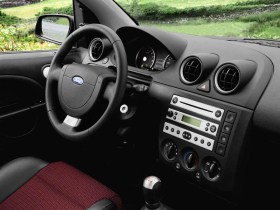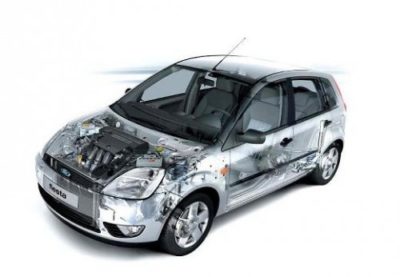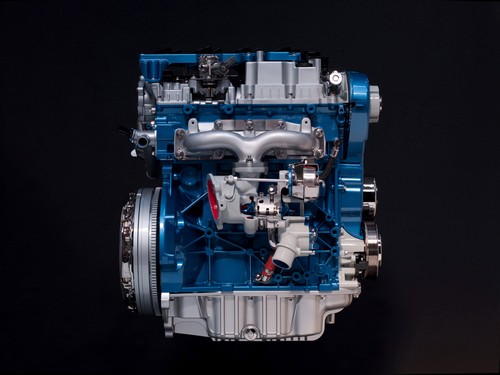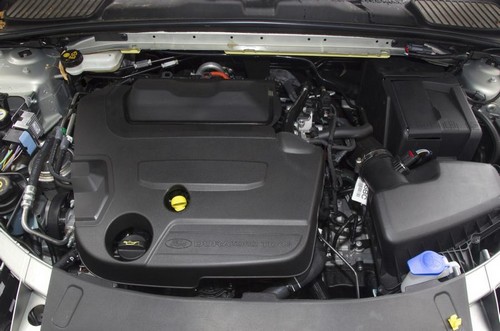Ford Fiesta 2002. – 2008. - polovnjak, experiences, failures

Ford Fiesta
2002. je predstavljena nova Ford Fiesta. Dok su prethodne generacije bile veoma blizu jedna drugoj, tako je Ford Fiesta potpuno nešto novo, četvrta generacija Fieste (6. ako se uzme u obzir restiling). Konačno, izgled Ford Fieste privlači pažnju, postao je atraktivan.
Velika svetla, naglašen blatobrani i veći naglasak na stajling u skladu sa principima fordovog dizajna New Edge Ford Fiesta je dala utisak dinamičnog automobila. Ovo je dovelo do veće potražnje za Ford Fiesta-om među mlađom publikom.
Ford Focus je priča, koja je počela 1976. Na osnovu nove šasije, Ford Fiesta je pobedila u prostranosti i rukovanju. Njegovo ponašanje se pokazalo bezbednim u svim okolnostima. Kvalitet završne obrade nije najbolji, sa lošim kvalitetom plastike. Restilizovana verzija, koja se pojavila u 2005., potpuno ispravlja problem sa lošom plastikom usvajanjem nove instrument table. Pouzdanost, tako danas se više ne mogu naći velike nedostatke kod Ford Fiesta-e , to nije bio slučaj tokom ranih godina proizvodnje.
Razočaravajuća završna obrada na verzijama pre fejslifting.
Glavne prednosti malog Forda su nesumnjivo vozne karakteristike, lakoća vožnje i nisku stopa kvarova.
Osnovna zapremina prtljažnika 285 l je u klasi malih automobila i dalje veoma dobra.
Na početku dvadeset prvog veka, B – segmenta vozila počeo je intenzivno da sazreva. Prošlost su postali slabi motori, loša oprema i klimavo vešanje. Fiesta je odličan primer promena na bolje. Posle skoro decenije posle početka proizvodnje i dalje je atraktivan, mada neupadljiv automobil.
Fiesta se prodaje sa troja ili petoro vrata. Čak i u formatu petoro vrata ima sportski izgled, mada izgled sa troje vrata mu daje vizuelni deo, koji je stekao mnoge komplimente od onih koji vole da njihovi automobili biti mali i uzbudljivo.
2005. Ford Fiesta je prošla fejslifting, kozmetičke promene. Prednji i zadnja svetla su neznatno modifikovana, ali je zadržao svoj nekadašnji izgled. Blago unapređeni branici i bočni retrovizori. Zajedno sa fejslifting Ford proširio spektar opcija na raspolaganju kod novog modela. Ford Fiesta ne tako davno jednostavan i uglavnom slabo opremljeni automobil, sada možete biti opremljen sa ESP, Putni računar, MP3 plejer, automatski brisači i mnoge druge pogodnosti koje su ranije niko nije očekivao kod B segmenta automobila.
2004. ponudi se pridružila sportska verzija ST. 2005. je restalizovani automobil. From 2006. svi modeli si dobili standardni ABS sistem. Dve godine kasnije, kompanija je prestala proizvodnju Ford Fiesta.
KOMFOR – Ford Fiesta

Ford Fiesta
Predstavljen u proleće 2002., nova Ford Fiesta, nema nikakve veze sa svojim prethodnicima. Ne samo da više ne deli nikakvo telo sa prethodnom Fiesta, već je veći, prostraniji i napredan u pogledu kvaliteta i završne obrade proizvodnje.
Izgled enterijera i materijala na modelima pre restailinga izgleda prilično prosečno, sa fejsliftingom u oktobru 2005. (uključujući i revidiranih branike i farove) poboljšano je od strane Forda. U odnosu na svog prethodnika Ford Fiesta ponudila je više prostora i čvršću šasiju.
Sedišta su veoma udobna, pozadi odrasli putnici nemaju previše mesta, gepek je na nivou klase. Instrument tabla pre fejsliftinga ne ističe se previše kvalitetom materijala.
Spolja Ford Fiesta izgleda kao umanjen Focus. Savremeni izgled, podignuta zadnja svetlosna grupa i izuzetno dobar auto za vožnju su stvari koje krase ovog Fordovog mališana. Po mnogima jedan od najboljih malih gradskih automobila na tržištu. Mesta za volanom ima dovoljno pa će i oni višeg rasta pronaći udobnu poziciju. Preglednost je dobra što znači da nećete imati previše problema u gradskim gužvama i uparkiravanju na malom prostoru. Ford Fiesta ima izvanrednu upravljivost, koja je dočarana klasičnom suspenzijom nezavisno prednje i torzionom pozadi.
Još jedna prednost Ford Fiesta-e dobro podešena šasija i vešanje. Osećaj sigurnosti za vozača i putnike. Čak i u krivinama prilikom velikih brzina, Ford Fiesta i dalje je sigurna.
EuroNCAP crash test Ford Fiesta-e urađen je 2002 i dobio je za zaštitu putnika četiri zvezdice.
Ford Fiesta neće razočarati one koji traže praktičan prevozna sredstva. Unutrašnjost je vrlo prostrana i ergonomska. Prostora u kabini ima za četiri odrasle osobe. Kapacitet prtljažnika od 284 litara je jedan od boljih rezultata u klasi. Prostran prtljažnik Fiesta je uspeo da razvije uprkos dužini tela od 3,9 metara -telo nekih konkurenata su duži za nekoliko centimetara. Vozač će ceniti Ford Fiestu za jednostavan i pregledan kokpit, visoko postavljenoj menjaču i dobru vidljivost. Ljudi obraćaju pažnju i na estetske lepote koje kod Ford Fiesta treba tražiti posle fejsliftinga 2005., koji zahvaljujući revidiranju detalja unutrašnjosti izgleda bolja.
Fiesta je lak za vožnju, servo pruža dragocenu pomoć i glatko kontrolu. Pogled napred je dobar, kao i strani s obzirom na veličinu staklenih površina.
MOTOR – Ford Fiesta

Ford Fiesta
Ford Fiesta ima širok spektar motora koje možete izabrati, početak od 73 KS 1,25 point, slab motor, jedino za vožnju po gradu. 67 KS 1.3 – litarski bio dostupan za ograničeno vreme (2002. – 2003.) i bio je nešto manje moćna od 1.25 litra koji ga je zamenio. 1,3 benzinac izbegavajte, jer dosta troši, a ima veoma loše performanse. 78 KS 1.4 – litarski benzinac sa 90 KS je očigledno jači, ali i skuplji jer više troši. Međutim vozači u potrazi za više opušteniji vožnju na autoputu treba da se opredelite za 1.6 – litre sa 100 KS (ne baš najtraženiji i najpouzdaniji). Dizel linija obuhvata 1.4 TDCi sa 67 the KS 1,6 – litarskim TDCi sa 88 KS. Obe su odlične jedinice, ali za mešavinu performansi i ekonomičnosti ,1.4 TDCi radi najbolji posao. Pet – stepeni manuelni menjač daje oštre, precizne promene. Tu je 150 KS ST verzija.
Izbor pogonske jedinice zavisi od toga kako nameravate da koristite. Motori manji od 70 KS najbolji su za grad. Jači motori omogućavaju da zadovoljstvo u vožnji. Kupci mogu da biraju između preciznog manuelnog menjača, klasičnih automatskih i automatskih menjača Durashift EST.
Benzin 1.4 80 KS i dalje nije dovoljno da se znaju granice za šasiju Fiesta. Dosta, however, da se brzo i relativno umereno putuju. U kombinovanom ciklusu 1,4 troši u proseku 7,2 l / 100 km.
Dizel 1.6 TDCi : Zbog cene kupci Ford Fiesta se obično odlučuje za slabiji 1.4 TDCi turbo dizel. Nekoliko godina rada zbrisali značajne razlike. As a result,, za malo više novca možete kupiti Fiesta 1.6 TDCi, koji radi primetno bolje od slabijih sestara, troši skoro istu količinu goriva. Defekt na obe jedinice ostati na niskom nivou.
Suspenzija je prilično izdržljiva, ali na duže staze moraju da se zamene amortizere, koji cure i stabilizatori. Kvare se i krajevi spona i ležajevi točkova.
Ford Fiesta – istorija modela: 2001. Premijera Ford Fieste sa petoro vrata, 1.3 (58 the KS 68 KS), 1.4 16V (80 KS), 1.6 16V (100 KS), 1.4 TDCi (common rail, 68 KS).
4.2002. Početak prodaje Ford Fiesta-e.
10.2002. verzija Ford Fieste sa troje vrata. Ford Fiesta kombi (Fusion).
3.2003. 1.25 – litarski agregat zamenjuje 1,3 – litarski.
10.2004. restailing Ford Fiesta donosi sveže branike i masku, instrument tabla.
11.2004. Ford Fiesta 2.0 ST,ST 2.0 16V (150 KS). Novi motori 1.25 (75 KS), 1.6 TDCi (common rail, 90 KS).
9.2008. Kraj proizvodnje Ford Fieste.
KVAROVI – Ford Fiesta
Ford Fiesta ne pripada posebno problematičnim automobilima. Da nije bilo mnogo problema sa korozijom karoserije, verovatno bi se imalo bolje mišljenje o Ford Fiesta-i.
Nisu tako česta pojava, ali istaći ćemo par standardnih problema.
Vodena pumpa može da otkaže pre vremena pa obratite pažnju na čudne zvukove iz motora kada je u leru.
Obratite pažnju na curenja vode u kabini kod nogu vozača i suvozača što je znak da treba zameniti filter polena.
Retko se dešavalo i da otkaže servo uređaj što nije nimalo jeftino za popraviti.
Generalno pouzdan auto, ne tako skup za kupovinu kao polovan pa ni za kasnije održavanje.
ECU su ponekad nepouzdana, što dovodi do lošeg rada motora.
Problem : problemi cevi goriva su prilično česte u Ford Fiesta-i izrađenih u periodu od jula 2004. do februara 2005, ovo greška rezultiralo opoziva vozila kao što su cevi nisu ugrađeni u specifikaciji i može da izazove curenje goriva. Rešenje : Ugradnja nove cevi će ispraviti problem.
Rasprostranjen problem sa EAC (elektronska kontrola akcelerator) problem na 1.25 i 1.4 benzinskim motorima. Dijagnostika identifikuje kao senzor pozicije gasa odnos grešku kao problem. Može biti zbog korozije u jednoj od konektora.
Uverite se da su benzinski motori su imali redovne promene ulja najmanje svakih 10 000 km – ako ne, neredovna zamena može ubrzati prevremeno habanje motora.
Kvačilo. Na benzinskim verzijama, može veoma brzo habanje kvačila (ponekad manje od 20 000 km).
Utikači, the. instalacija i kalemi bobine mogu biti oštećena kada voda iz prskalica, dospe u motor.
Problemi sa napajanjem goriva kod benzinskih i dizel motora.
Benzinci neravnomerno rade, padovi snage i gušenja, u proleće 2003. Pronađen uzrok, problem je bio u lošem kontaktu ECU motora.
Benzinski motori oštećenje alternatora, defekt lambda senzora, problem sa step motorom praznog hodu.
Servo volan. Na mnogim modelima, 1.4 TDCi pojede se cev serva i servo ulje procuri. Rizik od gubitka upravljanja.
Na 1.4 TDCi dizelašima problema sa vodom gorivo, takođe se pojavljuje zajednički problem sa glasnim zatezačem zupčastog kaiša, što ukazuje potrebu za zamenom.
1.4 TDCi motor takođe pati od problema curenja goriva, obično u takvoj situaciji pomaže zamena zaptivki brizgaljki, krivica simptom je intenzivan miris goriva u kolima, kao i visoka potrošnja dizela. Može izazvati poteškoće sa startovanjem.
Nafta curi kod 1.6 TDCi motorom.
1.6tdci motor pate od loše napravljenih merni štapovi ulja, plastika kraj može pasti u karter.
1.6tdci grejači mogu biti problem.
Za vozila opremljena TDCi motorom od 1.6 dolazi do češće curenje ulja na zaptivnim elementima.
The 1.6 TDCi dizel motora česta curenja tečnosti za hlađenje na plastičnom kućištu termostata, plastika se deformiše.
1.6 TDCI, cev (vod) za ulje turbine blokira dovod ulja, što izaziva kvar turbine.
Menjač uglavnom se radi o curenju ulja iz menjača i hidraulične tečnosti iz pumpe kvačila. Tokom inspekcije morate da obratite pažnju na to da li se ispod automobil ne pojavljuju kapi tečnosti.
Proveriti sa li automatski menjači menjanje brzina tiho i glatko – mogu biti razlog složenih i skupih popravki.
Durashift automatski menjač problema sa automatskim kvačilom.
Mogući su problem sa ležajevima točka. Njihovo loše stanje otkriva se glasnim urlikom ili tutnjavom tokom vožnje.
Vešanje. Na prvim modelima, vibracije na volanu do 120 km / h, zahteva balansiranje točkova.
Neželjeni šum. Na modelima pre restailinga, završna obrada nije savršena. Ovo izaziva pojavu buke na tabli i na zadnjem sedištu.
Na svim vozilima dolazi do zadržavanja vode u vratima, zbog začepljenja ili zatvorenih otvora za drenažu na dnu stranice vrata.
Verzija sa troja vrata ima problem sa mehanizmom za podizanje sedišta.
Česti problem sa elektronskim ventilom gasa ili elektronskom pedalom , što sugeriše upaljena lampa kvara motora.
U početnim modelima je čest problem sa jedinicom za kontrolu klima. Problem sa klapnama za distribuciju vazduha. Često pojedinačne klapne ne žele da se zatvore / otvore, tako vazduh duva samo u jednoj ili više oblasti.
Problemi sa alternatorom.
Instrument tabla i lampe i kazaljke čas rade čas ne, zbog loše mase.
Problem sa netačnim merač goriva, što bi moglo izgledati kao manji problem, ali na dugim putovanjima može postati ozbiljan problem.
Ford je imao problem sa korozije tela svojih modela. Ford Fiesta je izuzetak i mogu zarđati suviše brzo. To je razlog zašto morate da gledate veoma pažljivo ivice vrata, branike, haubu i poklopca prtljažnika. Tu se pojavljuju braon fleke.
Površna korozija izduva.
OPOZIVI – Ford Fiesta
Ford Fieste proizvedene između 1. i 18.4.2002. opozvani u servis radi montiranja modifikovane centralne jedinice vazdušnih jastuka., kontrole instrument table koje je moglo sprečiti pokretanje motora i zbog sprečavanja eventualnih problema sa filterom goriva kod dizela.
Ford Fiesta proizvođena između 23. i 27.8.2002. opozvani u servis zbog mogućnosti da jedan var na zadnjoj osovini nije konkretno urađen. Čitava zadnja osovina je kod ovih vozila prekontrolisana i po potrebi zamenjena.
11.04.2005. Gorivo povratak cev curi.
06.08.2007. Mogući curenja servo ulje, potencijalni gubitak kontrole volana.
28.11.2007. Mogući greška na pojas pogonskom servo pumpe.
Polovnjak Ford Fiesta cene – pregled

Hi there, I am Mladen and I am an auto enthusiast. I started this blog years ago to help like minded people share information about latest cars, car servicing ideas, used car info, exotic cars, and auto technology. You will find helpful articles and videos on a wide variety of cars – Audi, Mercedes, Toyota, Porsche, Volvo, BMW and much more. Ping us if you have anything cool to share on latest cars or on how to make older cars more efficient, or just want to say hi!



Zanima me u fieste 1.4 benz 59 kw 80 ks 2006. g, da li je lanac ili zubcasti remen.
Imam problem kod paljenja motora ford fieste proizvedene 2007 years. Kad je hladan pali bez problema medjutim posle gašenja neće da upali. Čak neće ni da zavrti alnaser. Trebam sačekati izvesno vreme pa onda upali bez većih problema. Mislim da je u pitanju brava na volanu ali nisam siguran da je to.
To je sigurno, imao sam isti kvar, kontaktna brava nije bula OK, otklonio sam za 25eur kod servisera
Pozdrav,imam fiestu 2008 g problem je sa desnim vratima od suvozača moram lupiti sa vratima ako su vec zatvorena meni kaze senzor da su otvorena .Dali netko za problem ili gdje se nalazi senzor
1.3 motor najbolji izbor 300.000 km nikakv problem na plinu 7l/100km jos prvi lanac
fiesta 1.4 iskace pelivno crevo na cetvrtoj dizni
Ford Fiesta 1.6 benzin sportska verzija 2007 godiste, imam problem kad se vozilo zagreje vozi duze od 10 km. tesko se salta menjac, dok kada je hladan menja normalno ima ulje. Dali je do menjaca ili kvacila.